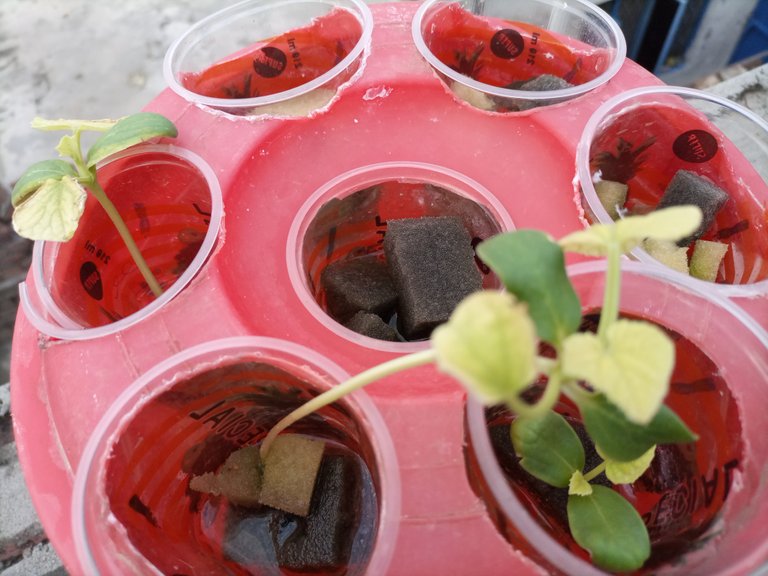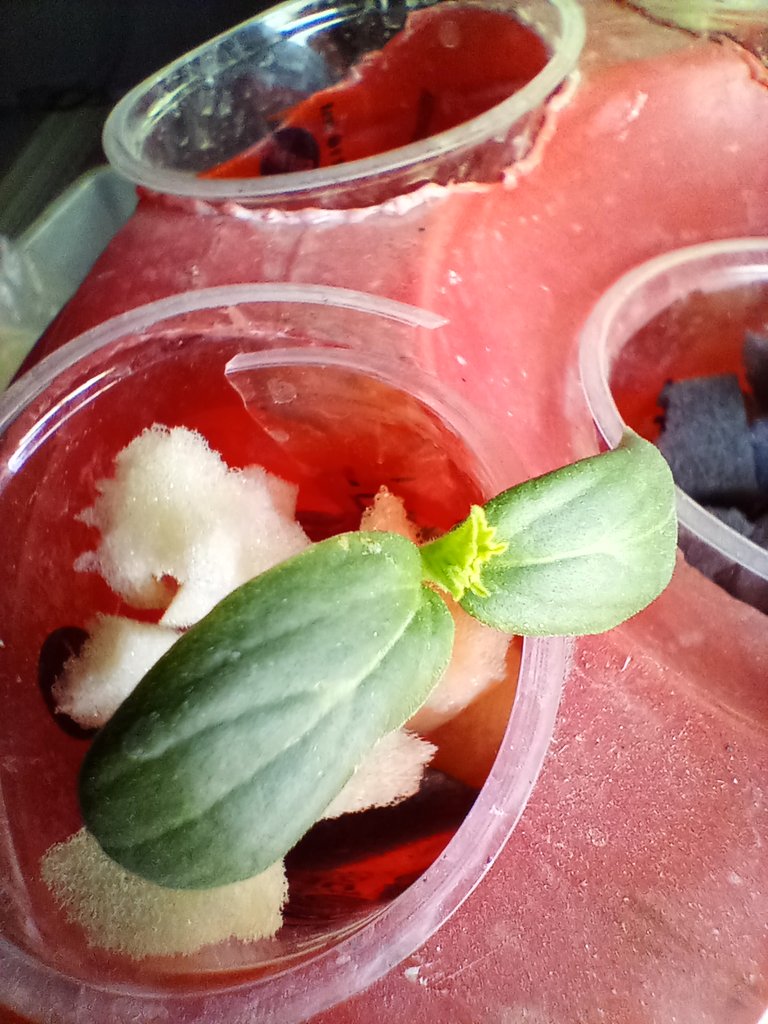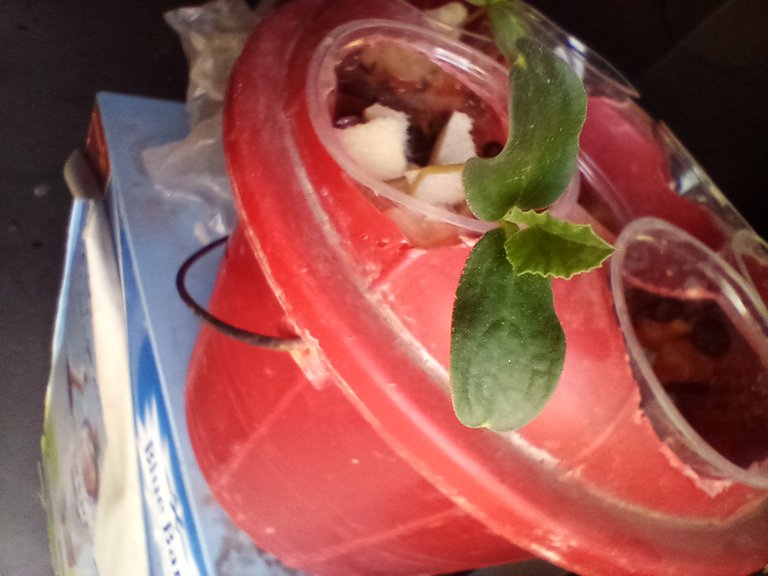Progress and Challenges in My No-Pump Hydroponics Journey
Hello, my fellow gardener's!
I have been busy Since I started my no-pump hydroponics experience using small buckets. I'm here today to update you on how my plants are doing and to explain a particular problem I ran into. So let's start right now!

I'm happy to inform you that after carefully tending to my plants in the hydroponics system, they have displayed extraordinary development. They have reached a critical point in their growth when they produce two to three true leaves. There's a catch, though: I've noticed that the leaves are sporting an odd yellow hue. Let's investigate this issue more thoroughly and consider its possible causes.

Nutrient deficit is one likely cause of yellowing leaves in hydroponic systems. My plants may not be receiving enough nutrients or are experiencing imbalances despite my careful commitment to the advised nutrient solution concentration. I decided to fix this problem step by step
I went over the nutrition solution once again first. I conducted a detailed analysis of the NKK 20-20-20+TE kit and spoke with other hydroponics gardener's. After giving it great thought, I changed the nutrient solution by slightly raising the concentration of some critical elements, assuring a more balanced and customized blend for the unique requirements of my plants.

I then paid great attention to the nutrition solution's pH values. Changes in pH can prevent nutrients from being absorbed and result in nutrient shortages. As a result, I periodically checked the pH using a dependable testing kit and made the required modifications to keep it within an ideal range that was good for the growth of the plants.
I also checked the caliber of the water I used to make the nutrition solution. Water pollutants or an overabundance of minerals can occasionally have a detrimental effect on plant health. To fix this, I put in place a filtering system that would get rid of any potential impurities and give the nutrition solution cleaner water.
Additionally, I took the time to evaluate the lighting conditions for my hydroponics arrangement. Yellowing leaves can be the result of insufficient lighting or an unbalanced spectrum of light. I added additional artificial grow lights to the lighting setup to improve it, guaranteeing that the plants had enough light throughout the day by supplanting the sun.

Last, but not least, it's important to remember that yellowing leaves can also be a sign of overwatering or underwatering. In a hydroponics system, finding the ideal balance is crucial. I adjusted the watering schedule after carefully assessing the moisture levels in the growing medium to avoid waterlogging or parched conditions. To ensure that the roots have access to moisture while preventing excessive dampness, consistency is essential.
I've discovered on this path that difficulties are chances for development and learning. They provide an opportunity to improve methods, test out changes, and fine-tune the hydroponics system to provide the ideal environment for plant growth.

I'm looking forward to following my plants' continuous progress in the no-pump hydroponics system as I go. I'm optimistic that my plants will flourish and provide a bountiful harvest now that I have a better understanding of the nutritional needs, pH control, and lighting factors.

My fellow gardeners, that obstacles are just stepping stones on the way to achievement. Accept setbacks as opportunities for learning, and don't be hesitant to change and improve your strategy. Stay tuned for more information as I continue my hydroponics journey.
Yay! 🤗
Your content has been boosted with Ecency Points, by @aiovo.
Use Ecency daily to boost your growth on platform!
Support Ecency
Vote for new Proposal
Delegate HP and earn more